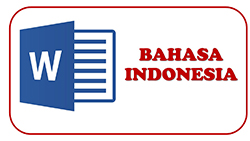Bibliometric Analysis: Trends and Patterns of Islamic Studies Theories and Methods in The Last Five Years
Abstract
This study aims to analyze trends, citation patterns, and collaborations in research related to the theory and methods of Islamic Studies over the past five years to provide an in-depth understanding of the development of theory and methods in Islamic Studies, identify significant contributions from journals, researchers, and institutions, and uncover research gaps that could be opportunities for further development. The bibliometric method used includes collecting data from Google Scholar using the Publish or Perish application, which is then visualized with VOSviewer software to analyze collaboration patterns, publication trends, and citation networks. The study also integrates quantitative and qualitative analysis to provide a richer interpretation of the data. The results show that publications in Islamic Studies experienced a significant increase in 2023 with the highest number of studies, although there was a decline in 2024. Other key findings include the dominance of traditional methods such as interpretation in research, although contemporary approaches such as phenomenology and comparative methods continue to evolve. However, there are gaps in cross-disciplinary integration and broader international collaboration. The novelty and contribution of this research lies in its comprehensive approach in combining bibliometric methods and qualitative analysis to map the development of Islamic Studies theory and methods, as well as identifying unanswered research gaps. The study not only provides insight into the latest scientific trends and patterns but also offers strategic recommendations to improve the quality and relevance of research in this field in the future.
Downloads
References
Abdalla, M., Chown, D., & Memon, N. (2020). Islamic studies in australian islamic schools: Learner voice. Religions, 11(8), 1–15. https://doi.org/10.3390/rel11080404
Alkandari, K., & Alabdulhadi, M. (2023). Promoting Self-Regulation Skills Among Pre-Service Islamic Studies Teachers Through Project-Based Learning Utilizing a Flipped Learning Strategy. International Journal of Learning, Teaching and Educational Research, 22(5), 74–100. https://doi.org/10.26803/ijlter.22.5.4
Amir, A. N. (2023). Imam Al-Nawawi: Riwayat Ringkas Tentang Latar Pemikiran Dan Pengaruhnya. International Journal of Islam and Contemporary Affairs, 2(1). https://doi.org/10.61465/jurnalyadim.v2.77
Apriantoro, M. S., & Susanto, I. W. (2024). Exploring the Landscape of Islamic Management Research Through Bibliometric Analysis: Insights and Implications. Contemporary Management Research, 20(1), 47–73. https://doi.org/10.7903/cmr.23460
As’ad, M., Zainuddin, M., & Samsul Hady, M. (2023). The western perspective on islam: Reading the legacy of snouck hurgronje on islamic studies. Teosofi: Jurnal Tasawuf Dan Pemikiran Islam, 13(1), 80–104. https://doi.org/10.15642/teosofi.2023.13.1.80-104
Azwar, A., Abur Hamdi Usman, & Mohd Farid Ravi Abdullah. (2024). Bibliometric Analysis of the Development of Hadith Studies in Reputable International Scientific Publications. Hadis, 14(27), 1–13. https://doi.org/10.53840/hadis.v14i27.255
Belhaj, A. (2023). Who Defines Islam? Critical Perspectives on Islamic Studies. Religions, 14(6). https://doi.org/10.3390/rel14060753
Doolabi, M. A. S. H., & Behroozi, M. (2021). The Context of the Formation of Islamic Studies in Europe with the Approach of Muslims and Christians’ Integration in Andalusia. Journal of Archaeological Studies, 13(2), 47–70. https://doi.org/10.22059/jarcs.2021.269453.142642
Darmawati, D. (2022). Overview of Islamic Boarding School Educational Communication Media: A Bibliometric Analysis Study. Madania: Jurnal Ilmu-Ilmu Keislaman, 12(2), 85. https://doi.org/10.24014/jiik.v12i2.20275
Ghozali, I., Imawan, M. R., & Zamzami, M. R. (2024). Multiculturalism Education In Islam. JURISH. 2(1), 103–112. https://doi.org/10.3342/jursih.v2i1.35
Haddaway, N. R., Page, M. J., Pritchard, C. C., & McGuinness, L. A. (2022). PRISMA2020: An R package and Shiny app for producing PRISMA 2020-compliant flow diagrams, with interactivity for optimised digital transparency and Open Synthesis Campbell Systematic Reviews, 18, e1230. https://doi.org/10.1002/cl2.1230
Huda, A. A. S., Hamdi, H., Ridani, M. N., & Nurhuda, A. (2024). Reorientasi Dikotomis Ilmu Agama dan Umum Melalui Pendekatan Analisis Bibliometrik. Kamaya: Jurnal Ilmu Agama, 7(2), 155–168. https://doi.org/10.37329/kamaya.v7i2.3219
Ilham, D. (2020). Persoalan-Persoalan Pendidikan dalam Kajian Filsafat Pendidikan Islam. Didaktika, 9(2). Retrieved from https://jurnaldidaktika.org/179
Jannah, S., Indrawati, I., Rahayu, H. D. (2020). Meningkatkan eksistensi dan pelestarian batik di era modern. JP2M. https://riset.unisma.ac.id/index.php/JP2M/article/view/6536
Judijanto, L., Efendi, E., Ode, H., & Sipayung, B. (2024). Analyzing Research Trends and Future Prospects in Islamic Capital Markets through Bibliometric Mapping. The Es Accounting And Finance, 2(03), 220–231. https://doi.org/10.58812/esaf.v2i03.292
Judijanto, L., & Halim, C. (2024). Exploring the Intellectual Structure of Islamic Education in Distance Learning with Bibliometric Analysis. The Eastasouth Journal of Learning and Educations, 2(02), 97–110. https://doi.org/10.58812/esle.v2i02.304
Kaplan, Y. (2019). A general look at the islamic and Islamic philosophy studies in the USA. Cumhuriyet Ilahiyat Dergisi, 23(1), 563–579. https://doi.org/10.18505/cuid.547135
Keskin, Z., & Ozalp, M. (2021). Islamic studies in Australia’s universities. Religions, 12(2), 1–16. https://doi.org/10.3390/rel12020099
Khaerulasfar, K. (2020). Analisis Penafsiran Moderasi Perspektif Tafsir Al-Sya’rawi. Jurnal Al-Mubarak: Jurnal Kajian Al-Qur’an Dan Tafsir, 5(1), 51–79. https://doi.org/10.47435/al-mubarak.v5i1.153
Lutfi, M., & Yulianingsih, R. (2018). Desain dan pengujian alat adsorpsi limbah cair batik tulis dengan variasi waktu detensi dan komposisi zeolit kolom adsorpsi. Jurnal Keteknikan Pertanian Tropis Dan …. https://jkptb.ub.ac.id/index.php/jkptb/article/view/480
M Choirul Muzaini, Prastowo, A., & Salamah, U. (2024). Peran Teknologi Pendidikan Dalam Kemajuan Pendidikan Islam di Abad 21. Jurnal IHSAN Jurnal Pendidikan Islam, 2(2), 70–81. https://doi.org/10.61104/ihsan.v2i2.214
Oruç, M. C. (2022). an Interview With Professor David Cook on Islamic Studies. Hitit Theology Journal, 21(2), 1541–1560. https://doi.org/10.14395/hid.1160897
Otterbeck, J. (2021). Finding the object of study: Islamic studies in practice. International Journal of Religion, 2(1), 47–60. https://doi.org/10.33182/ijor.v2i1.1474
Pettalongi, S. S. (2022). Interdisciplinary and Multidisciplinary Studies in Islamic Studies Context. Proceeding of International Conference on Islamic and Interdisciplinary Studies (ICIIS), 1(1), 1–8. Retrieved from https://jurnal.uindatokarama.ac.id/index.php/iciis/issue/archive
Priambudi, R. R., Alvianna, S., Hermin, D. (2022). The Effect of Attractions, Facilities, and Prices on Customer Satisfaction at The Written Batik Celaket Center, Malang City. IJRESM. 5, (2); 91–97. https://journal.ijresm.com/index.php/ijresm/article/view/1681
Raihani, Karim, P., Asyari, S. M., & Mahnun, N. (2016). Delivering islamic studies and teaching diversity in Southern Thai Islamic schools. Al-Jami’ah, 54(1), 123–146. https://doi.org/10.14421/ajis.2016.541.123-146
Rifky, S., Putra, J. M., Ahmad, A. T., Widayanthi, D. G. C., Abdullah, G., Sunardi, S., & Syathroh, I. L. (2024). Pendidikan Yang Menginspirasi: Mengasah Potensi Individu. Yayasan Literasi Sains Indonesia.
Saraçoğlu, T. N. (2022). Islamic Studies in the Context of Digital Humanities. Islam Tetkikleri Dergisi. Istanbul University Press. https://doi.org/10.26650/iuitd.2022.1123964
Sumanti, S. T., Salminawati, S., Budianti, Y., Wibowo, B. S., Syarif, J., Hamidah, D., & Usman, J. (2024). Development of the study of Islamic education in Scopus indexed international publications in 2017-2022: Bibliometric analysis. Educational Administration: Theory and Practice, 30(6), 3494–3499. https://doi.org/10.53555/kuey.v30i6.1005
Supriani, I., & Mubarrok, U. S. (2023). Islamic economics, banking, and finance literature bibliometrics approach: Guideline for journal databases. Review of Islamic Social Finance and Entrepreneurship, 2(1), 29–44. https://doi.org/10.20885/risfe.vol2.iss1.art3
Syamsu Rijal. (2023). Mapping the Landscape of Sharia Economics: A Bibliometric Analysis. West Science Interdisciplinary Studies, 1(6), 317–328. https://doi.org/10.58812/wsis.v1i6.107
van Eck, N. J., & Waltman, L. (2010). Software survey: VOSviewer, a computer program for bibliometric mapping. Scientometrics, 84(2), 523–538. https://doi.org/10.1007/s11192-009-0146-3
Zhu, J., & Liu, W. (2020). A tale of two databases: the use of Web of Science and Scopus in academic papers Historia de dos bases de datos: el uso de Web of Science y Scopus en artículos académicos. Scientometrics, 123(1), 321–335.





.png)










